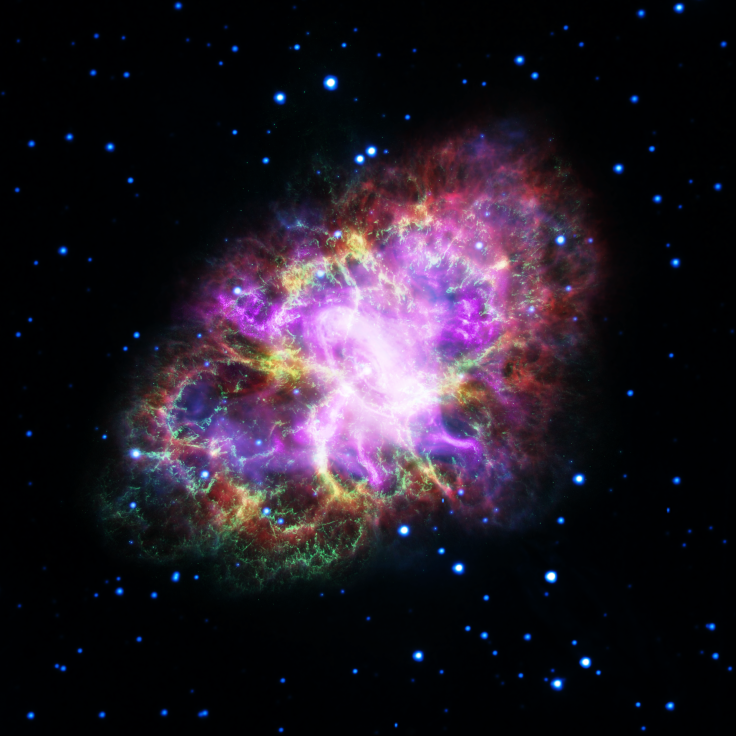NASA Captures Ghost Of Crab Nebula, Supernova Star Explosion From Earth And Space
Telescopes literally from around the world have banded together to give us a detailed look at the Crab Nebula, the remnant of a supernova explosion that has been hanging in our night sky for 1,000 years.
Scientists used data from three Earth-orbiting satellites, another that trails the Earth in its orbit around the sun, and a telescope on the ground in New Mexico to piece together a view of the nebula, complete with the quickly rotating neutron star at its center, the remnant of the star that exploded to produce it.

NASA’s Goddard Space Flight Center said the telescope images represent almost the whole electromagnetic spectrum: radio waves from the Karl G. Jansky Very Large Array on Earth, infrared from the Spitzer Space Telescope as it trails Earth in orbit around the sun, and from satellite orbit, Hubble Space Telescope’s visible light, the XMM-Newton Observatory’s ultraviolet and Chandra X-ray Observatory’s X-rays. In a video (below), NASA combines them, using a different color for each — red, yellow, green, blue and purple, respectively.
Read: How a Supernova Kills You in Space
The images were taken a few years ago, but astronomers have been analyzing them to learn more about how supernova remnants work. Viewing it through different wavelengths gives scientists multiple perspectives from which to study it.
Supernova explosions occur when a star accumulates too much mass, whether that’s because it’s very old or because it has devoured a companion star, in the case of binary star systems where more than one star orbits the same point in space together. Astrophysicist Neil deGrasse Tyson has described it as “one of the greatest events in the universe.” It’s the biggest space explosion there is. “It would look beautiful up close, right up until the energy intensity vaporized you,” Tyson has said.
In the case of the Crab Nebula, which is 6,500 light years away, the remnant of the exploded star spins at its center, rotating about 30 times a second. That neutron star is a pulsar that is “shooting out rotating lighthouse-like beams of radio waves and light,” NASA said. “The nebula’s intricate shape is caused by a complex interplay of the pulsar, a fast-moving wind of particles coming from the pulsar, and material originally ejected by the supernova explosion and by the star itself before the explosion.”
Earth observers today can only see what the supernova explosion has left behind, but Chinese astronomers and other stargazers witnessed the supernova blowing up in 1054, with the Chinese first noting it on July 4 of that year.
“Knowledge of star-fields was not necessary to spot this surprising visitor,” Space.com explained. “According to records, the bright source was visible during the daytime for 23 days, shining six times as brightly as Venus. Those well-versed with the night sky would have been able to see it for 653 days — almost two years — with the naked eye.”
Japanese, Arabic and Native American astronomers also took note of the event, and since its discovery hundreds of years ago, it has been a star target of space enthusiasts.
See also:
© Copyright IBTimes 2024. All rights reserved.











